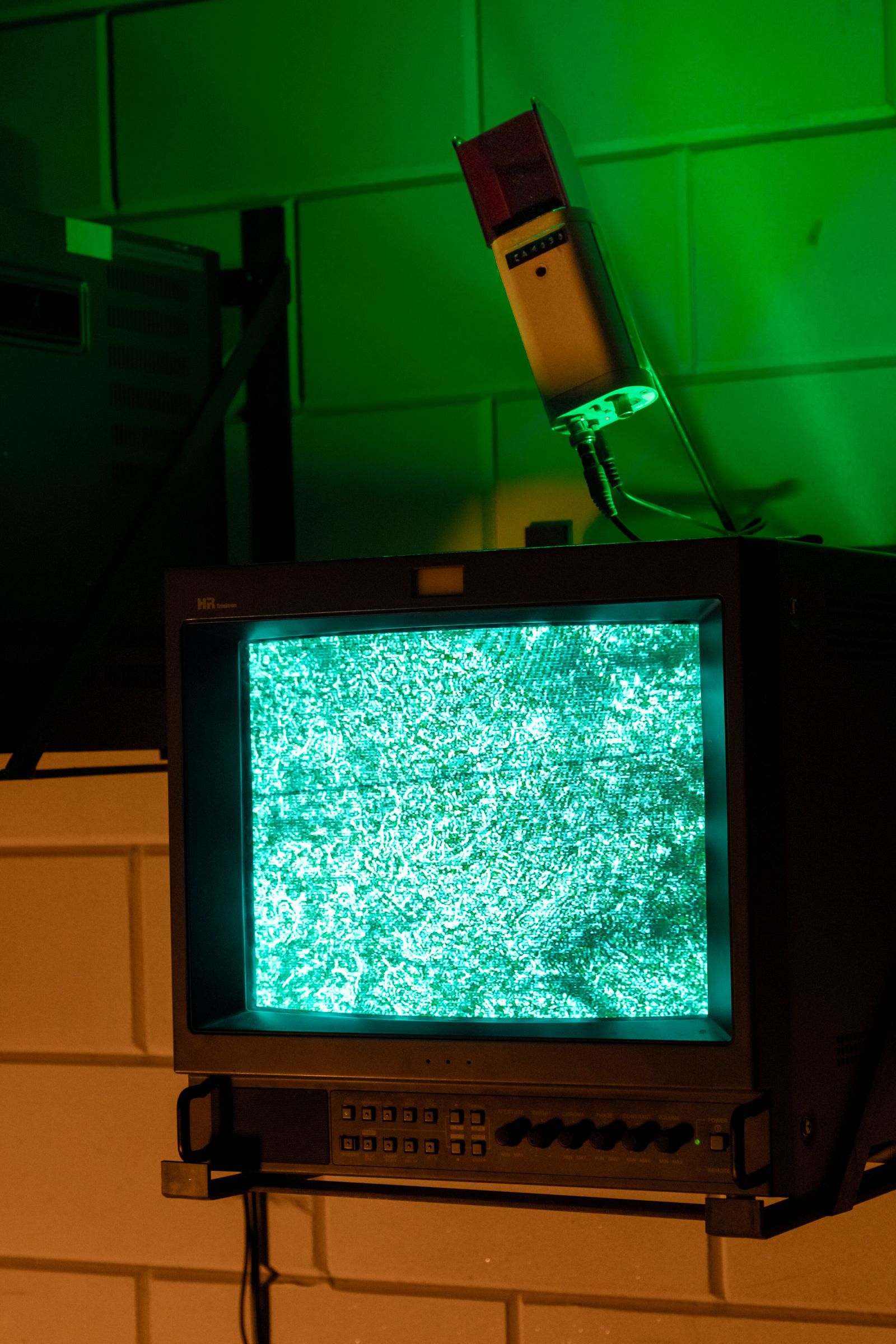
Luca Tornato
Keywords: Media archeology, Surveillance, New materialism
Read Thesis
lucatorsera@gmail.com
lucatornato.com
instagram.com/lucatorsera
a Life in a Camera consists of a laser projector installed at a 7m height, 10 surveillance cameras, 10 wall-mounted CRT TVs, and 10 cyanotype prints on textiles. The laser shines at the cameras, the output of the latter displayed on the TVs.
Behind every camera lens, there is a device called image sensor. It is the “eye“ of a camera, translating the amount of light into electronic signals for display. But there’s more to it - these sensors can also accumulate dust and microorganisms, resulting in patterns crystalized on the sensor’s surface. By shooting the laser’s high-powered beam straight into the camera’s sensor, the patterns become visible on the TVs. This media-archeological approach to surveillance cameras aims to excavate what’s inside them, unveiling that their internal mechanisms carry a past, a trace of their years of watchful vigilance. The audience faces a Material Witness, concept developed by artist-researcher Susan Schuppli to define matter that carries within both the means of recording and the evidence itself.
The installation takes a step further by experimenting with materializations of these patterns on different mediums. Given the history of surveillance and its relation to photography, I have chosen cyanotype - an early photographic technique in which a coated surface reacts to ultraviolet light. Therefore, the same laser used to shine light onto these patterns is then used to print on textile pieces shown on the wall.
This work aims to probe the insides of surveillance cameras, to crack open their "black box". To allow their metallic shell burst at the right moment, to touch and let be touched by the camera's fragility. What follows is an exploration of the physicality of non-human vision and its further affect on the audience's eyes when looking through the CRT.
Photos by Ira Grünberger and Aaryan Sinha.
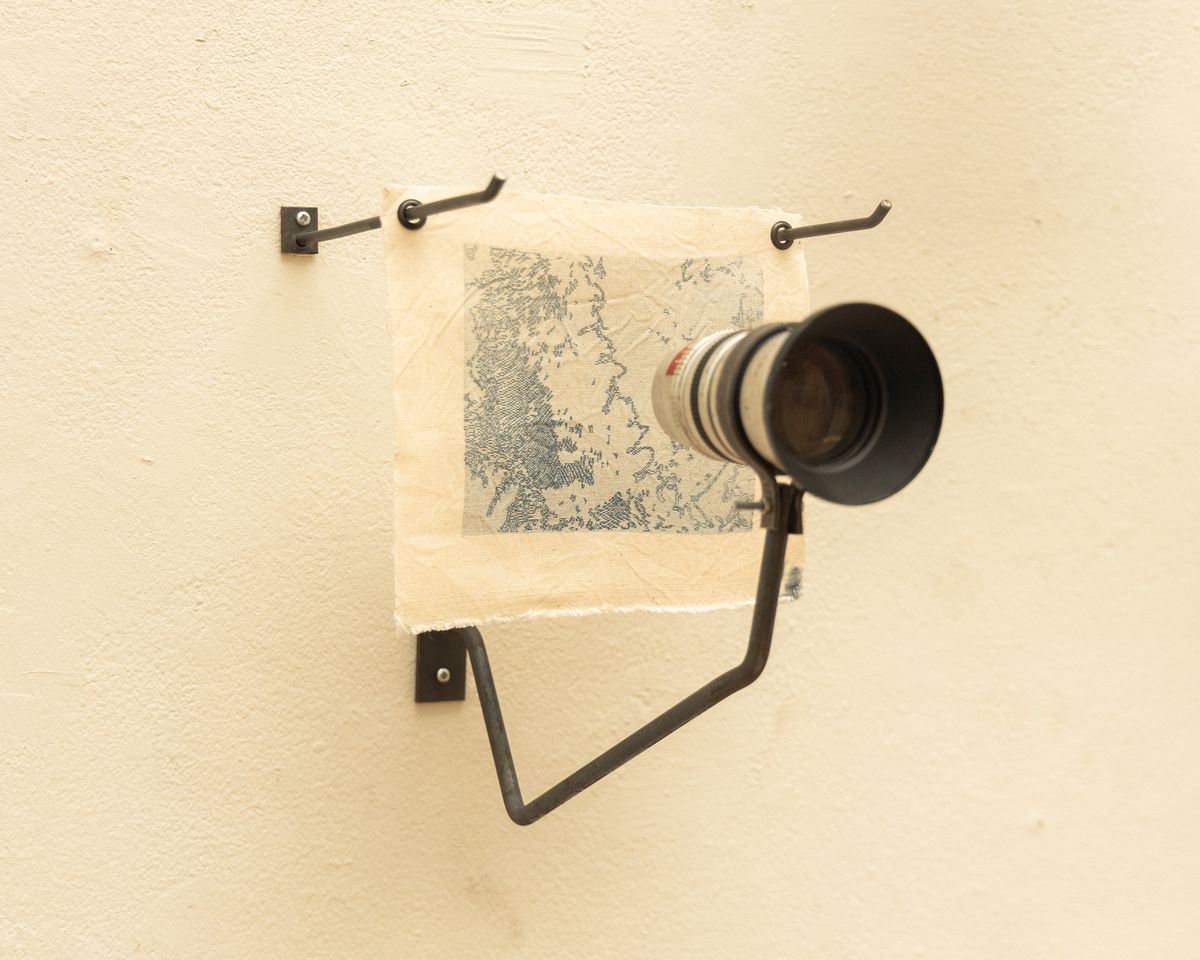
credits: Aaryan Sinha
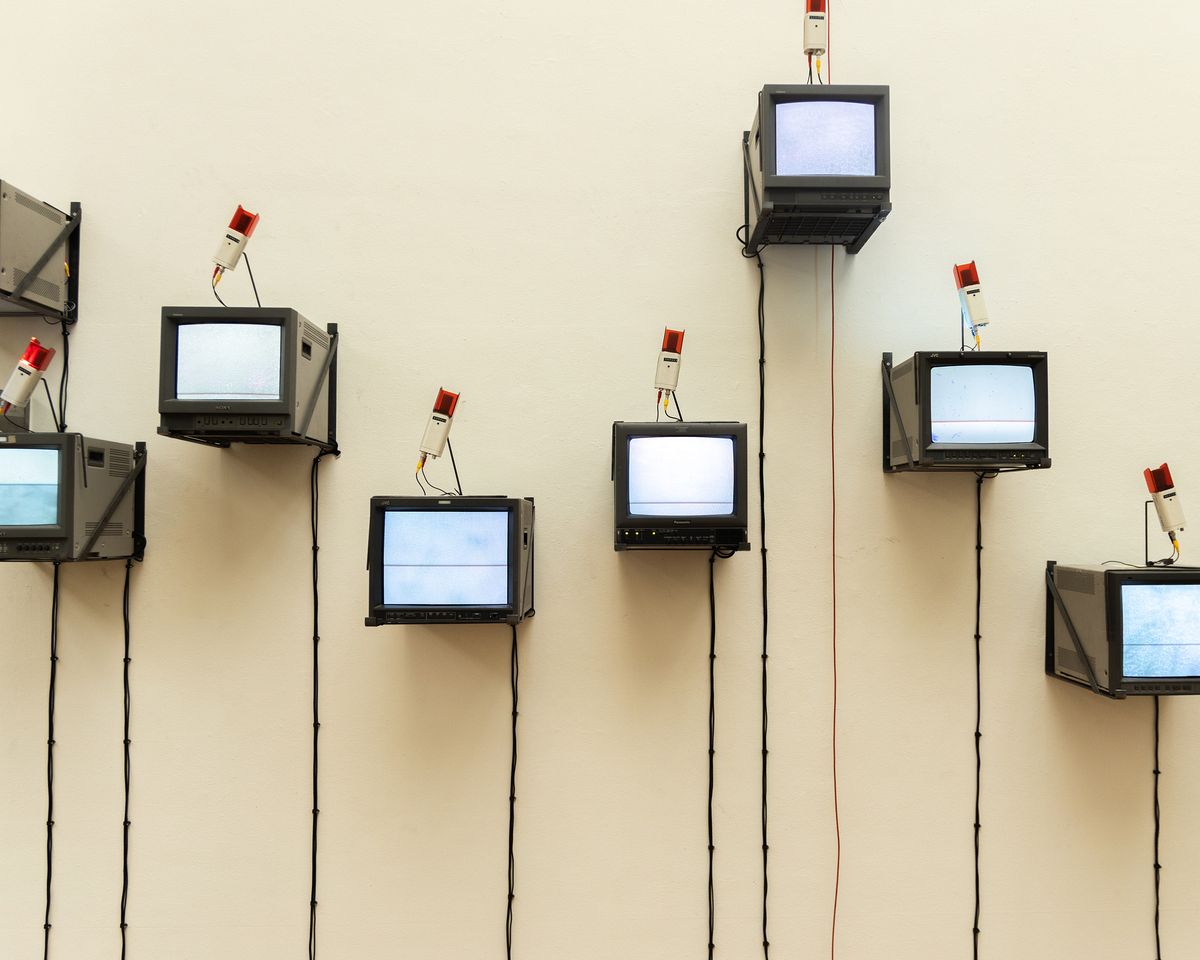
credits: Aaryan Sinha
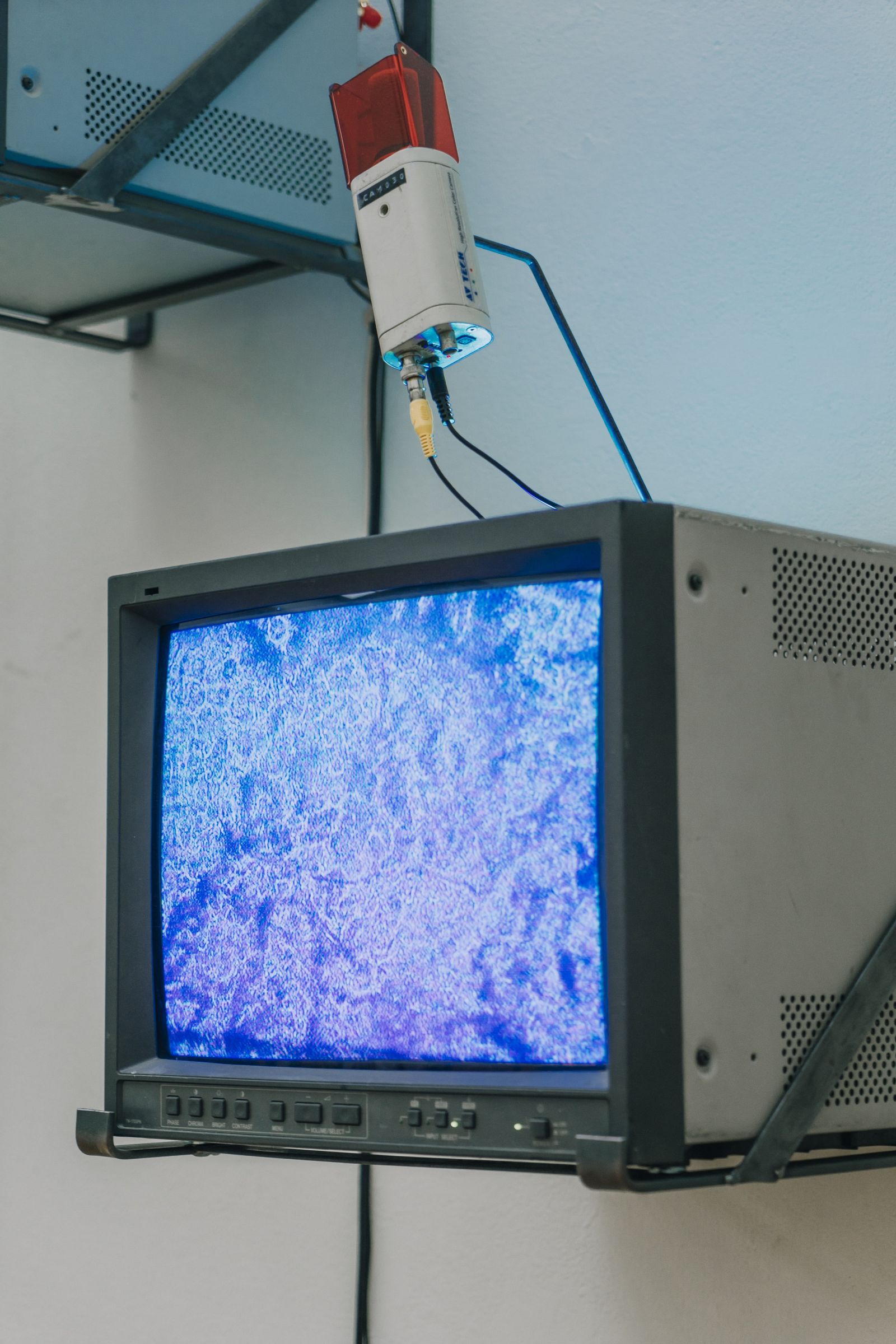
credits: Ira Grünberger
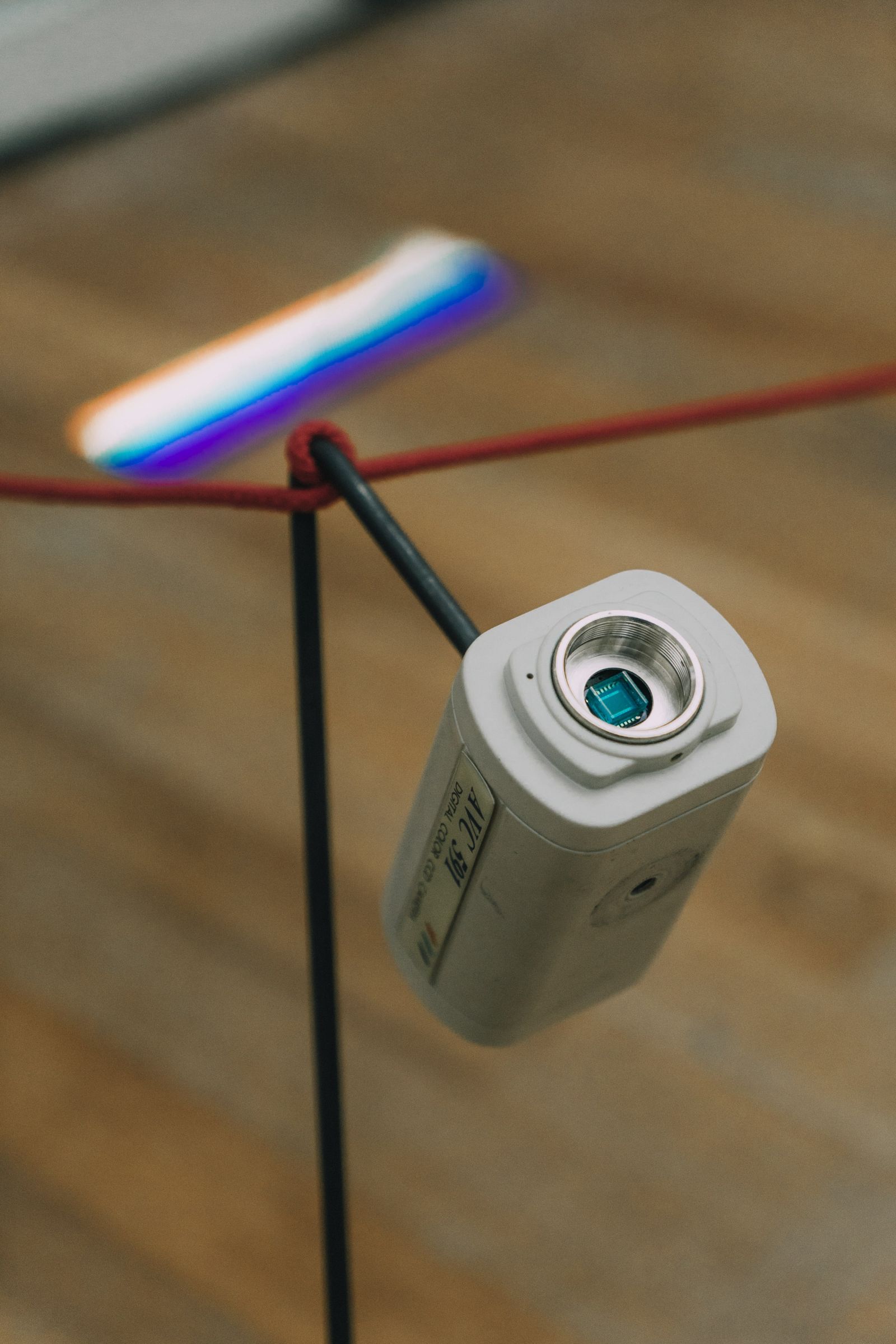
credits: Ira Grünberger